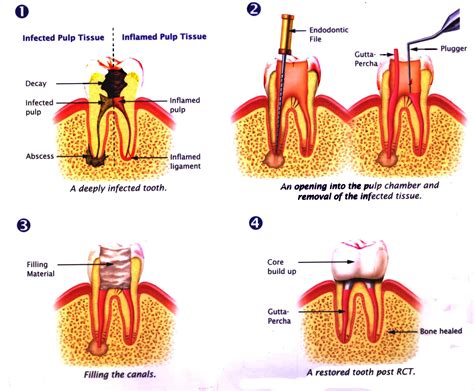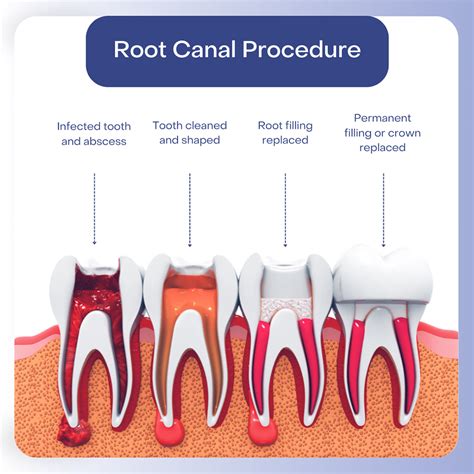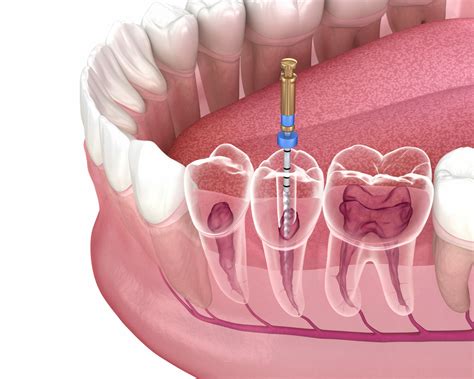Intro
Discover the ins and outs of root canal surgery, including endodontic treatment, tooth decay removal, and dental pulp care, to alleviate pain and save your natural tooth with this informative guide.
The prospect of undergoing root canal surgery can be daunting for many individuals. The term "surgery" often conjures up images of scalpels, hospitals, and lengthy recovery periods. However, root canal surgery, also known as endodontic therapy, is a relatively common and straightforward procedure that can save a tooth from extraction. In this article, we will delve into the world of root canal surgery, exploring its importance, benefits, and what to expect during the procedure.
The importance of root canal surgery cannot be overstated. When a tooth becomes infected or damaged, the pulp inside the tooth can become inflamed, leading to severe pain and discomfort. If left untreated, the infection can spread to other parts of the mouth, causing more serious health issues. Root canal surgery is a way to remove the infected pulp, clean and shape the root canal, and fill it with a special material to prevent further infection. This procedure can help alleviate pain, prevent the spread of infection, and save the tooth from extraction.
Despite its importance, many individuals are still unsure about what to expect during a root canal surgery. The procedure is typically performed by an endodontist, a specialist who has received advanced training in root canal therapy. The procedure usually takes one to two hours to complete, depending on the complexity of the case. The endodontist will use specialized instruments to remove the infected pulp, clean and shape the root canal, and fill it with a material called gutta-percha. The tooth is then sealed with a filling or crown to prevent further infection.
What is Root Canal Surgery?

Benefits of Root Canal Surgery
The benefits of root canal surgery are numerous. Some of the most significant advantages include: * Relief from pain and discomfort * Prevention of infection spread * Saving the tooth from extraction * Restoration of tooth function * Improvement of overall oral healthHow is Root Canal Surgery Performed?

What to Expect During the Procedure
During the procedure, the patient can expect to feel some discomfort, but this is usually minimal. The endodontist will use specialized instruments to remove the infected pulp and clean the root canal. The patient may hear some drilling or scraping sounds during the procedure, but these are normal. The procedure is usually performed under local anesthesia, which numbs the area and prevents pain.Types of Root Canal Surgery

Risks and Complications
As with any surgical procedure, there are some risks and complications associated with root canal surgery. These include: * Infection: There is a risk of infection after the procedure, which can be treated with antibiotics. * Pain: Some patients may experience pain or discomfort after the procedure, which can be managed with pain medication. * Nerve damage: There is a small risk of nerve damage during the procedure, which can cause numbness or tingling in the mouth.Recovery and Aftercare

Follow-up Care
Follow-up care is crucial after root canal surgery. The patient will need to return to the endodontist for a follow-up appointment to check on the healing progress and remove any temporary fillings or crowns. The patient will also need to practice good oral hygiene, including brushing and flossing regularly, to prevent further infection.Cost and Insurance

Factors Affecting Cost
Several factors can affect the cost of root canal surgery, including: * Complexity of the case: More complex cases may require additional procedures or specialized equipment, which can increase the cost. * Location: The cost of root canal surgery can vary depending on the location, with urban areas tend to be more expensive than rural areas. * Dentist or endodontist: The cost of root canal surgery can also vary depending on the dentist or endodontist performing the procedure.What is the purpose of root canal surgery?
+The purpose of root canal surgery is to remove infected or damaged pulp from a tooth, clean and shape the root canal, and fill it with a special material to prevent further infection.
Is root canal surgery painful?
+Root canal surgery is usually performed under local anesthesia, which numbs the area and prevents pain. Some patients may experience discomfort or pain after the procedure, but this can be managed with pain medication.
How long does root canal surgery take?
+The length of time required for root canal surgery can vary depending on the complexity of the case, but it usually takes one to two hours to complete.
In conclusion, root canal surgery is a common and effective procedure for saving teeth from extraction. While it may seem daunting, the benefits of root canal surgery far outweigh the risks. By understanding the procedure, its benefits, and what to expect, patients can make informed decisions about their oral health. If you are experiencing tooth pain or discomfort, consult with your dentist or endodontist to determine if root canal surgery is right for you. We invite you to share your experiences or ask questions in the comments below, and don't forget to share this article with others who may benefit from this information.
